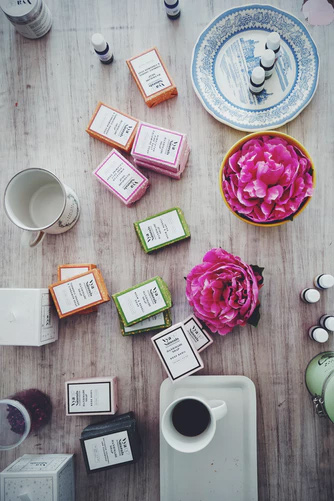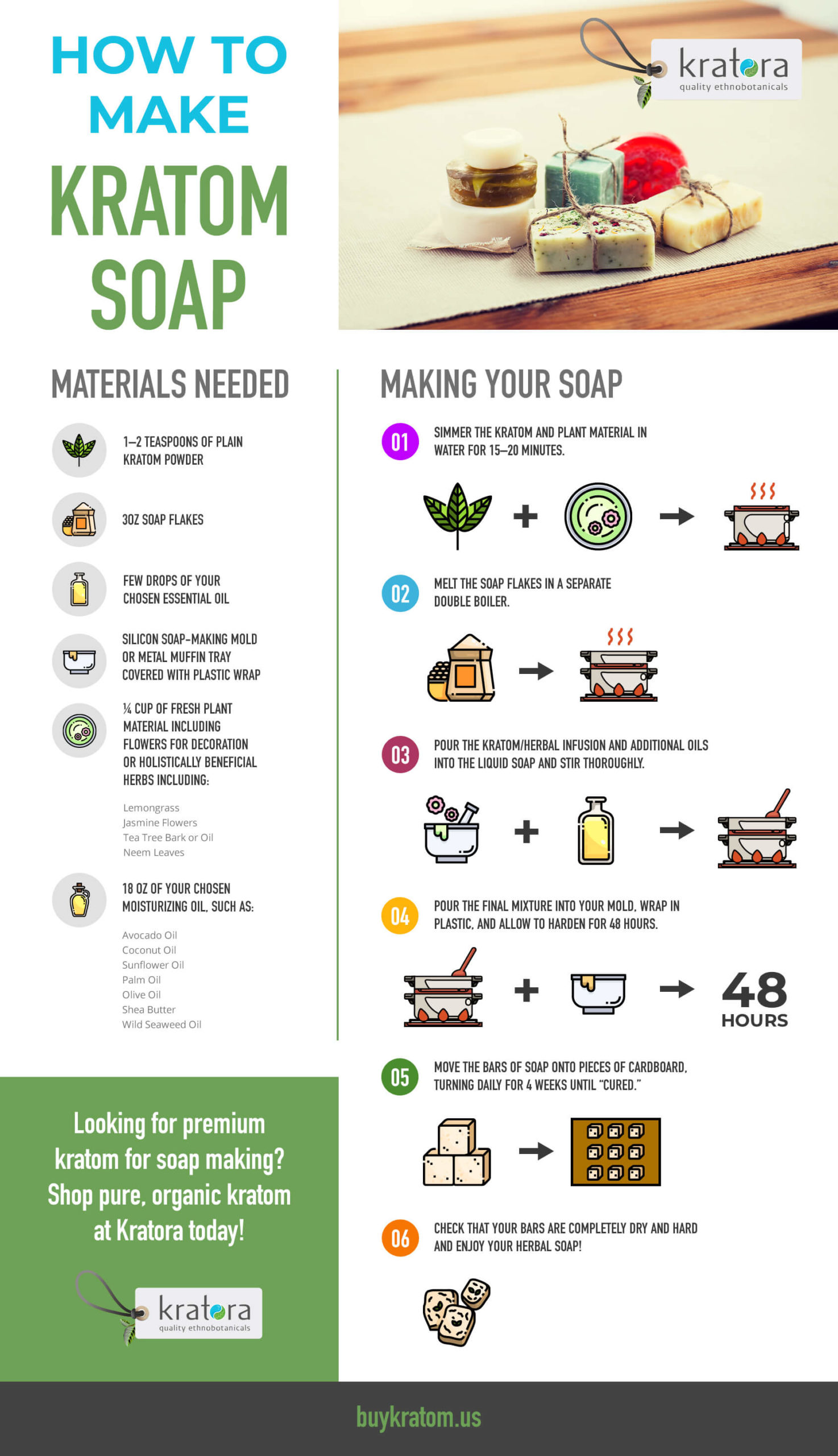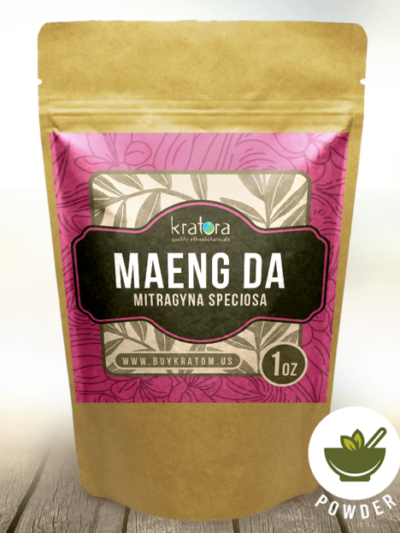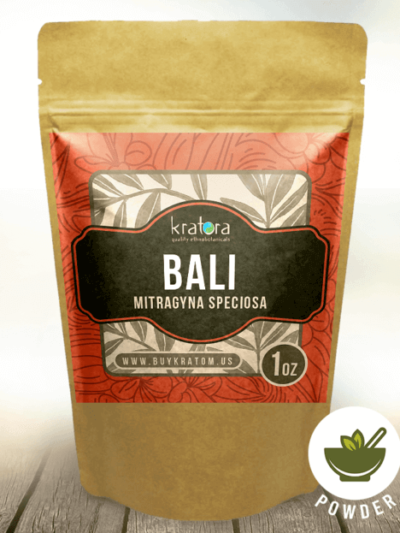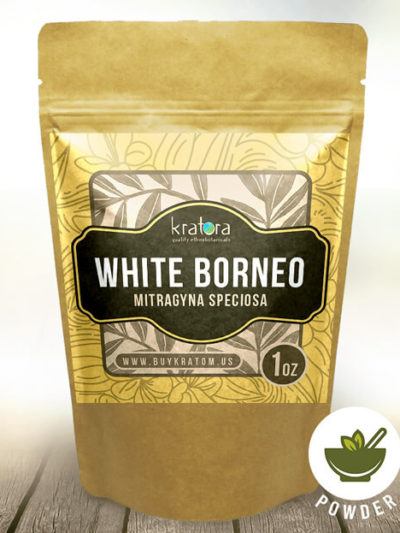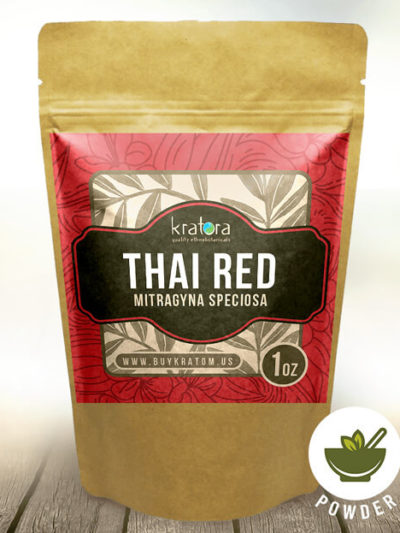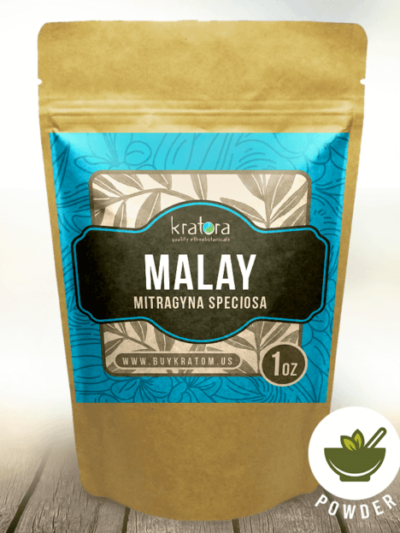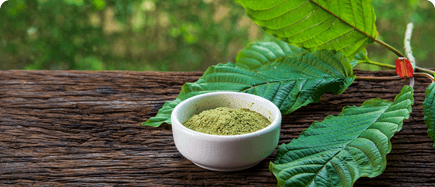Kratom soap is a safe and novel way to use kratom leaves and powder that can have many benefits for your skin. Learn all about kratom soap benefits and how to make this nourishing beauty product at home!
Why Make Your Own Herbal Soap?
Over the last few years, there has been a push toward understanding and knowing what exactly is in one’s beauty products. As awareness of natural beauty products grows, more and more people are starting to produce their own soap. Homemade soaps typically have either a glycerin or a vegetable oil base and can be made at home using simple household ingredients for a completely customized product that’s fit for your individual skin’s needs.
Kratom Soap Benefits: What Kratom Soap Can Do for Your Skin
While kratom soap might not smell as floral as other products, it does offer a range of benefits. In Southeast Asia, kratom has been used for centuries in the form of soap, salves, and lotions as a treatment for rashes and skin infections.
Considered to have antibacterial properties, one of the benefits of kratom soap is that it can be used to clear aggravated patches of skin. In comparison to conventional treatment creams that can only target one skin problem at a time, whole-leaf kratom used in kratom soap can help with several different problems at once. Kratom soap could be especially beneficial if you suffer from psoriasis, eczema, or red skin syndrome (RSS).
Ready to get started and see what kratom soap’s benefits can do for you? Let’s take a look at the ingredients you will need and the steps you can follow to make this useful herbal soap at home.
The Base: Vegetable Oil Versus Glycerin
If you’ve done any reading about soap making, you’ll realize that there are a variety of bases and processes that you can use. Some use only vegetable oils as their base while others swear by glycerin. Here is a rundown of each type and what you need to know:
Vegetable Oils
To make soap back in the day, people would simply mix animal fat from the cooking pan with ashes from the fire and—voila! A chemical reaction took place that made a basic type of soap.
Fast forward to today and we’re still mixing fat with ash, but this time in the form of high-quality vegetable oils and an alkali such as sodium hydroxide (known colloquially as “lye”). Vegetable oils for making kratom soap can include any of the following:
- Avocado oil
- Coconut oil
- Sunflower oil
- Palm oil
- Olive oil
The type of vegetable oil that you choose for your kratom soap will depend on how much of a lather you want to create with your soap and other properties of the oil that you want to combine with your kratom soap benefits (such as moisturization, essential fatty acids, vitamin E, and antibacterial properties). Modern soap makers will often use a few different oils (such as a combination between coconut and avocado oil) to make the most of their combined properties and natural fragrance.
Glycerin
Natural glycerin is a byproduct of the soap-making process and adds moisturizing and anti-bacterial properties to your herbal soap bars. If you are looking for a glycerin soap base, be sure to look for one that is derived from vegetable oil rather than one that is made synthetically.
Many “glycerin soap bases” that are sold in craft store as melt-and-pour solutions aren’t really glycerin at all. These flakes are made from glycol, sodium lauryl sulfate (SLS), and detergents.
Whichever base you choose for your kratom soap, your soap is still sure to have the same incredible kratom soap benefits as other herbal soaps made with a vegetable base.
Selecting and Preparing Your Herbs
Now that you’ve established the base of your soap, you have to decide the next most important thing: what you want your soap to smell like and accomplish! There are a variety of herbs and all-natural ethnobotanical kratom alternatives to choose from that compliment the benefits of kratom soap nicely.
Kratom
To add kratom to your soap, you can either use whole leaves or the plain powder. We recommend using the powder to make measuring easy. If you like, you can experiment with kratom extracts and use a smaller amount, but the plain powder is generally the better choice for kratom soap as it has all of its original component ratios intact. For a small batch of soap, you only need 1 or 2 teaspoons of kratom powder.
-
Energy
Maeng Da Kratom Powder
From $19.99 Shop Now This product has multiple variants. The options may be chosen on the product page Quick View -
Relaxing
Premium Commercial Bali Kratom Powder
From $12.99 Shop Now This product has multiple variants. The options may be chosen on the product page Quick View -
Energy
White Vein Borneo Kratom
From $11.99 Shop Now This product has multiple variants. The options may be chosen on the product page Quick View -
Relaxing
Thai Red Vein Kratom
From $14.99 Shop Now This product has multiple variants. The options may be chosen on the product page Quick View -
Energy
Green Malay Kratom Powder
From $12.99 Shop Now This product has multiple variants. The options may be chosen on the product page Quick View
Other Herbs and Flowers: Jasmine, Lemongrass, Tea Tree, Neem, and Tulsi
In addition to enjoying kratom soap benefits by themselves, you might want to add other fresh leaves, flowers, or essential oils that will enhance the antibacterial and antiseptic properties of your kratom soap. Herbs such as lemongrass, tea tree, neem, and tulsi (Indian basil) are known for their antiseptic properties and other skin benefits such as toning the skin and locking in moisture. Jasmine flowers are popular for their fresh, uplifting fragrance and moisturizing properties.
If using fresh leaves and flowers, add a ¼ cup of plant material at the simmering stage, along with the kratom powder. If using essential oil, follow the directions on the essential oil bottle as different brands vary in potency. You can also add a ½ teaspoon of other beneficial oils, such as coconut oil, avocado oil, shea butter, or wild seaweed oil to enhance the moisturizing properties of your blend.
How to Make Kratom Soap
In the interest of simplicity, we’ll assume you’ve found or made a plain soap base and explain how to turn this base into a kratom herbal soap. The quantities listed below are enough to make two large or several small bars.
Ingredients
- 3 cups of plain vegetable soap or glycerin soap flakes
- ¼ cup fresh lemongrass, tea tree, neem, tulsi, or jasmine flowers
- 2 teaspoons of beneficial oils and essential oils
- 1-2 teaspoons of plain leaf kratom powder
- Silicon soap-making molds or a metal muffin tray with plastic wrap or parchment paper over the top
Method for Making Kratom Soap
- Simmer the kratom and other fresh herbs and flowers in water for 15-20 minutes.
- In a separate pot, warm the soap flakes in a double boiler until it turns into a liquid.
- Add the oils and herbal infusion to the liquid soap and stir evenly to prevent clusters from forming.
- Pour the mixture into the soap mold or wrapped muffin tin, wrap it in plastic, and rest in an open, cool area for 48 hours.
- After allowing the soap to harden for 48 hours, transfer the bars of soap to sit on pieces of cardboard for at least 4 weeks, turning the bars over daily, until your soap is “cured.”
- When the bars are completely hard and dry, your kratom soap is ready to use!
Shop Premium Kratom Powder for Soap-Making at Kratora
The last secret to making the most of your kratom soap benefits is to start with a quality product! At Kratora, in our collection of plain kratom powder, you will find a variety of premium green, red, and white strains that are organic, sustainably sourced, and suitable for use in herbal soap-making.
Browse our collections to get started and contact us if you have any issues with ordering or shipping. Buy kratom now and enjoy preparing your handmade kratom soap!
Please note that none of the products sold on our website are intended to diagnose, treat, cure, or prevent any disease or medical condition.
Want to learn more about kratom quality and value? Start here:
Why Buying Cheap Kratom Can Be Dangerous
